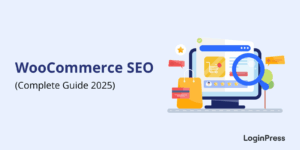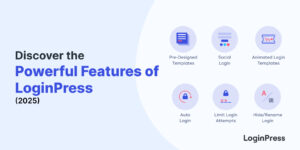Top 10 Landing Page Best Practices for More Conversions (2025)
Do you want more conversions on your WordPress site using the best landing page best practices?
A high-converting landing page can make all the difference. It can help capture users’ attention, drive action, and boost overall site performance. By optimizing design and user experience, you can significantly increase leads, sales, and sign-ups.
If you’re running campaigns, promoting products, or building your email list, following proven landing page optimization best practices ensures that you turn more visitors into customers much more quickly and effectively.
In this article, we will explore the top 10 landing page best practices for 2025 to help you maximize landing page conversions and be ahead of the competition.
Table of Contents
What is a Landing Page and Why is It Important?
A landing page is a dedicated web page designed with a single, focused objective. It is typically used in marketing and advertising campaigns. Visitors “land” on this page after clicking on a link from an email, online ad, or social media post.
The primary goal of a landing page is to prompt visitors to take a specific action, such as signing up for a newsletter, and initiate landing page conversions.
Unlike a homepage or a blog post, which can serve multiple purposes, landing pages are more goal-oriented to drive conversions.
How Is a Landing Page Different from Regular Website Pages?
Landing pages are different than other website pages as they are built for one sole purpose. Let’s go through some of the major differences.
| Landing pages | Regular website pages |
| Focus on one goal | Serve multiple purposes like navigation, info, blogs |
| Minimal distractions | Full navigation, sidebars, links to other content |
| Personalized messages | More general or broad messaging |
Best practices for landing pages are a key driver of conversions because they eliminate all the distractions that might otherwise divert a visitor from your intended action. By providing a personalized experience and clear call-to-action (CTA), they:
- Help capture more leads by focusing on a single CTA
- Encourage purchases or sign-ups
- Support marketing campaigns with measurable results
- Improve performance by aligning messaging with user intent
When designing a well-optimized landing page, it is also important to ensure it drives business results and applies landing page optimization best practices.
Top 10 Landing Page Best Practices for More Conversions (2025)
Here, we list some of the landing page best practices that have been proven to refine your site’s conversion rates.
1. Clear and Compelling Headline
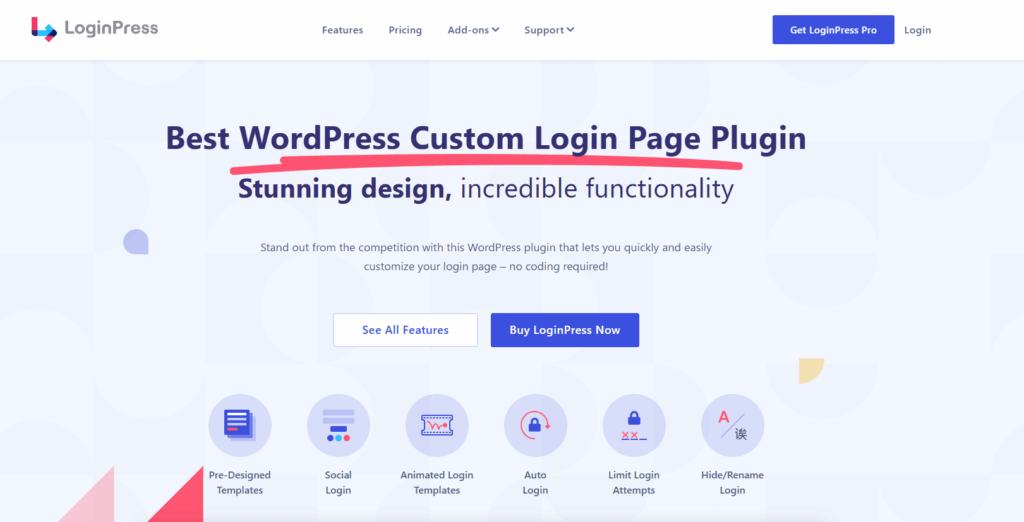
Landing pages should have clear, well-written content that attracts visitors and encourages them to stay on the site.
Why it matters
You have only a few seconds to capture attention, so a confusing or boring headline leads to higher bounce rates.
How to implement
You can implement this strategy by:
- Using action words
- Clearly stating the benefit or solution.
- Keeping it short (under 10 words, ideally).
Example:
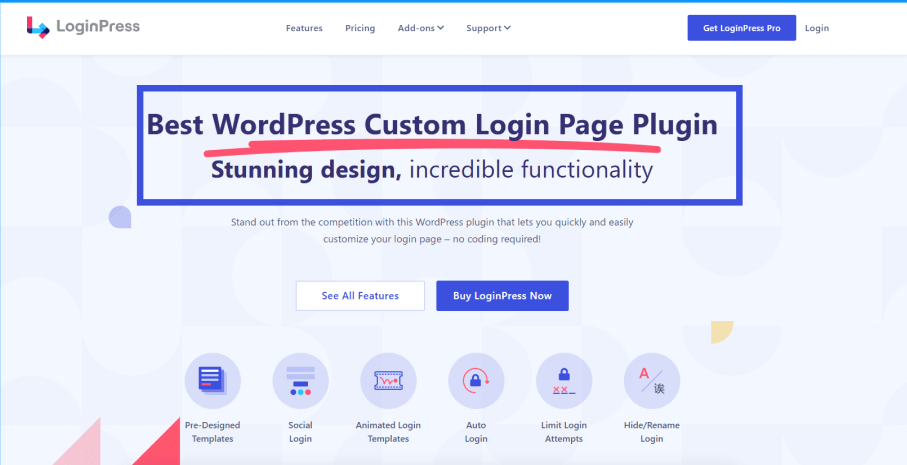
LoginPress landing page uses: “Best WordPress Login Page Plugin.”
It is bold and prominent, and placed at the top of the page. This makes it the first message visitors see.
2. Concise and Persuasive Copy
Concise and persuasive language is often the trick to get your user to convert from the landing page. This means that landing page copy should be clear, benefit-driven, and easy to check.
Here, we’ll show you how to apply landing page best practices.
Why it matters
Visitors skim online. Dense paragraphs or jargon-heavy content can kill user engagement.
How to implement
You can implement this strategy by:
- Using bullet points to highlight key features/benefits.
- Addressing pain points and providing quick solutions.
- Avoiding overexplaining; every word should have a purpose.
Example:
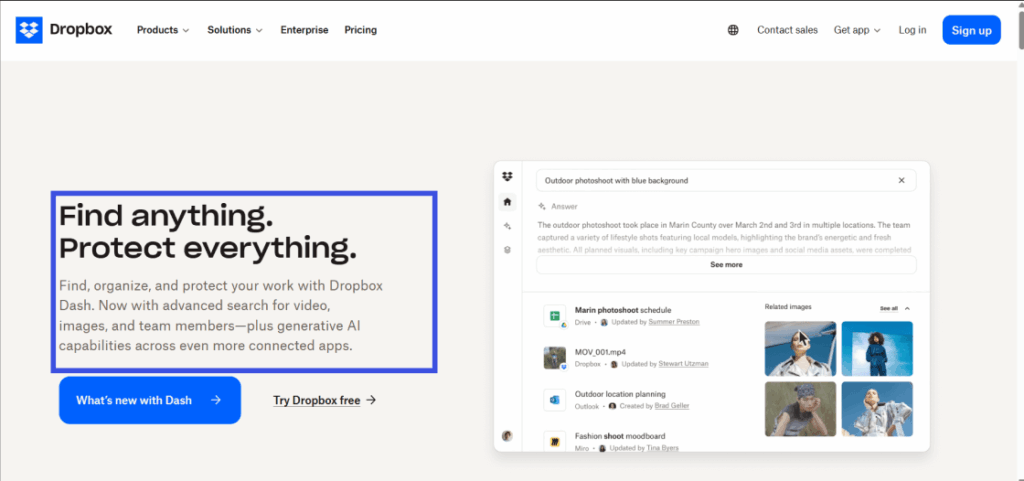
Dropbox uses short sentences and bold benefits like “Protect everything” and “Find anything.”
3. Engaging Call-to-Action (CTA)
Well-optimized and customized CTAs convert 42% more visitors compared to generic ones. A CTA is the button or link you want your site visitors to click. It’s your conversion goal in action.
Explained below is the importance and ways to implement it successfully.
Why it matters
CTAs trigger user behavior. A weak CTA can ruin an otherwise perfect landing page.
How to implement
You can apply this strategy by:
- Using strong verbs (e.g., “Start Free Trial,” “Get Instant Access”).
- Making buttons stand out visually.
- Creating urgency or exclusivity.
Example
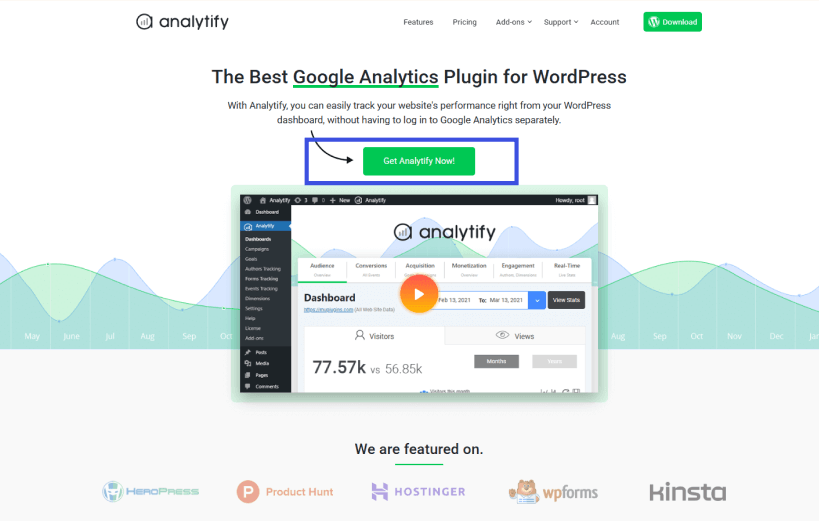
Analytify uses: “Get Analytify Now!” in a bold, high-contrast button which captures users’ attention.
4. Visual Appeal and Clean Design
A good landing page incorporates the best visual design ideas to enhance the user experience. No doubt a visually appealing layout enhances trust and keeps users engaged. Now we will learn why this practice holds importance and how to apply it.
Why it matters
Good design builds credibility. Poor design screams amateur and reduces trust.
How to implement
Here is how you can apply this strategy properly by:
- Using white space to improve readability.
- Sticking to a clean, consistent color palette.
- Prioritizing visual ordering of content for easier navigation.
Example
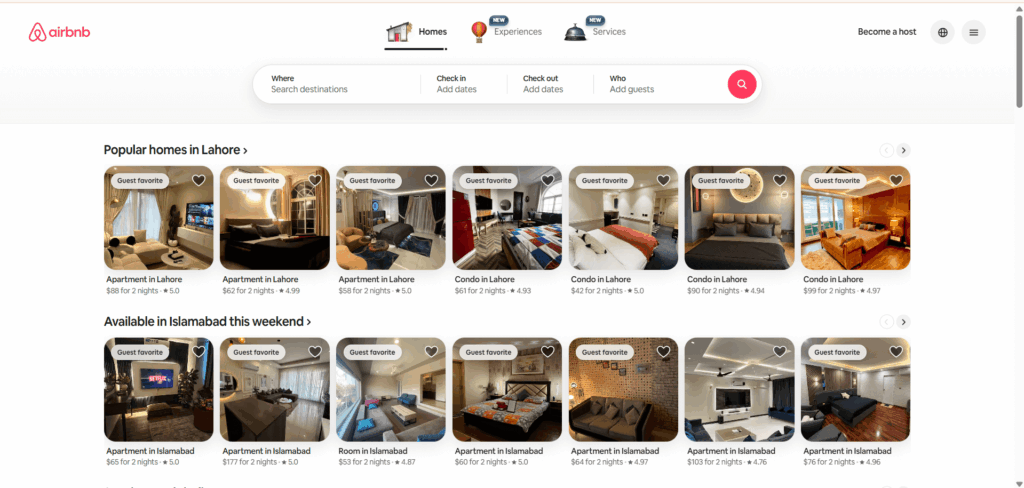
Airbnb‘s landing pages feature large imagery, large white space, and intuitive layouts.
5. Mobile Optimization
A well-designed landing page is fully optimized for all types of devices, including phones, tablets, and laptops. Your landing page shouldn’t appear crunched or lose its design elements when viewed on mobile phones. According to the survey held by Unbounce, “Almost three-quarters of the shoppers we surveyed claim they’ll wait 4 or more seconds before abandoning a page.”
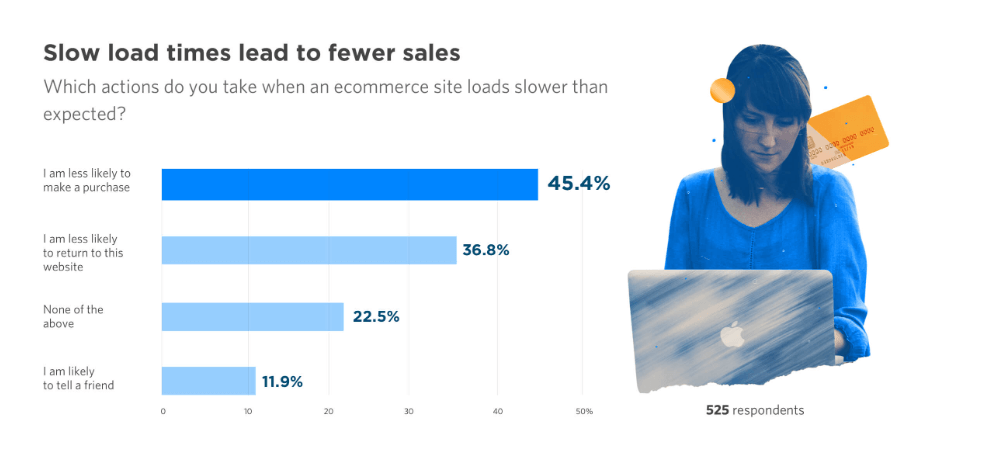
Why it matters
Over 60% of web traffic is generated from mobile devices. A non-responsive landing page will kill conversions instantly.
How to implement
You can apply these strategies by:
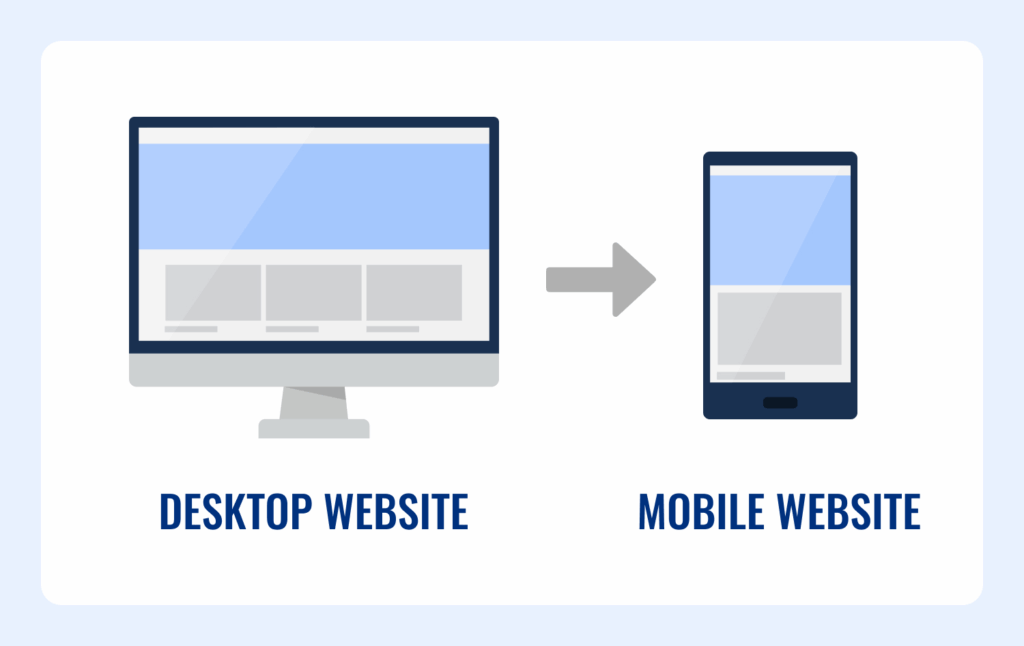
- Using device-responsive templates.
- Compressing images using free online tools like Compressor.io or TinyPNG
- Avoid large images or long forms.
- Making use of Viewport and meta tags: This content attribute controls how the page appears on different devices.

Example
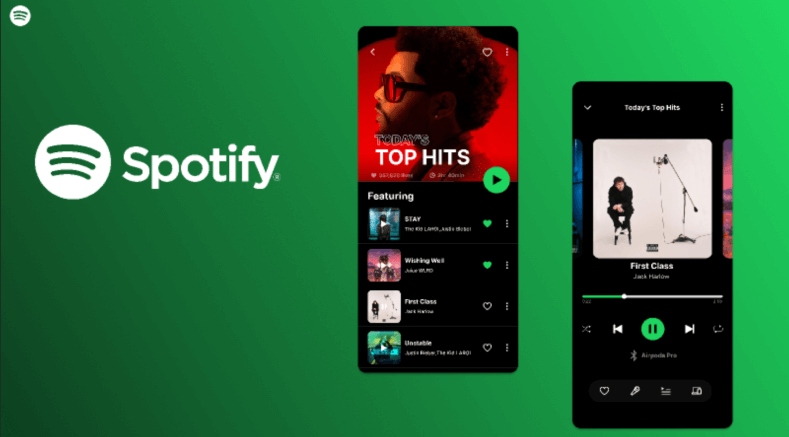
Spotify has a seamless mobile experience with big CTAs and scroll-friendly sections.
6. Social Proof (Reviews, Testimonials)
One of the best landing page practices is to include customers’ testimonials and reviews, which can increase trust between visitors and enhance the chances of conversion.
Why it matters
People trust other people; that is why any social proof can help validate your offering.
How to implement
You can implement this strategy by:
- Including star ratings, user testimonials, or client logos.
- Using video testimonials for higher engagement.
- Placing them near CTAs for maximum impact.
Example
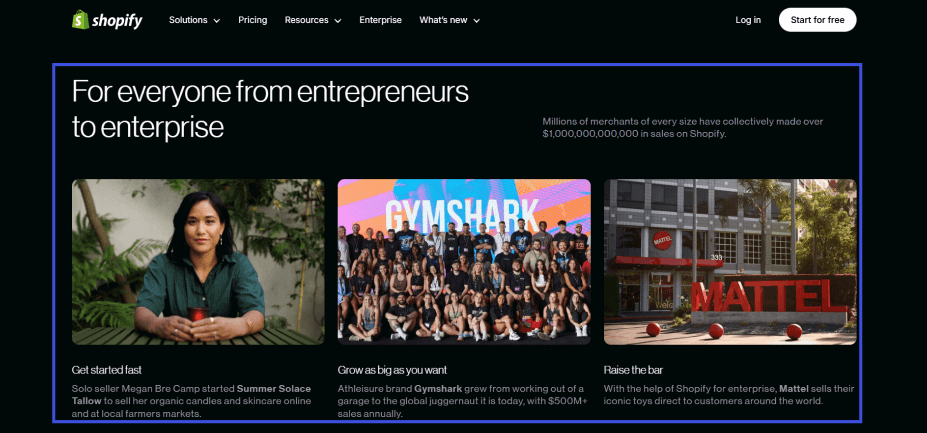
Shopify‘s landing pages showcase success stories from real businesses, adding trust.
7. Fast Loading Speed
Website speed is among the top 20 ranking factors on Google. Your landing page should load in under 2–3 seconds, which is the time range you have to make an impression on the user; any longer loading time can harm user engagement. This can cause the users to perceive it as slow. The average load time for all device types is shown in the study below:
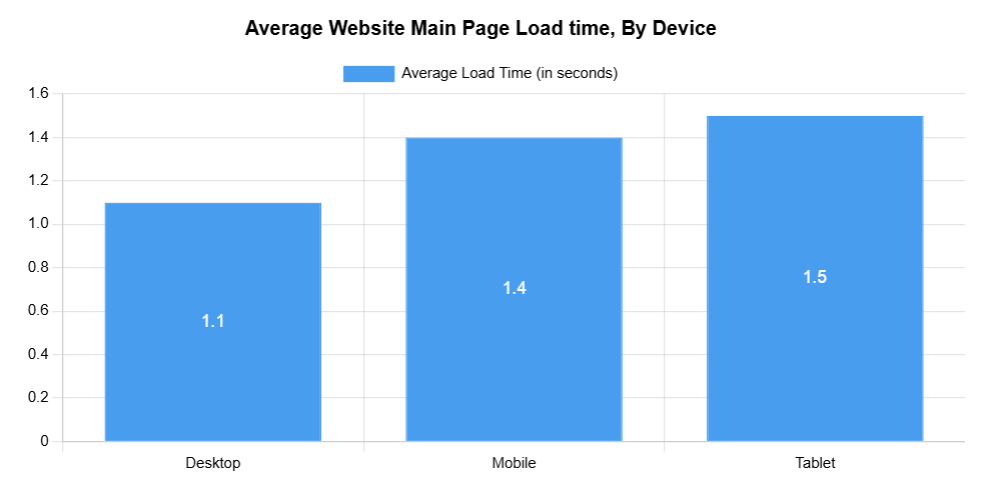
Why it matters
If a site is taking more than 3 seconds to load, it can cause the user to bounce and kill your site’s engagement.
How to implement
You can implement this strategy by:
- Compressing images and use lazy loading.
- Using a reliable hosting provider.
- Minimizing third-party scripts.
Example:
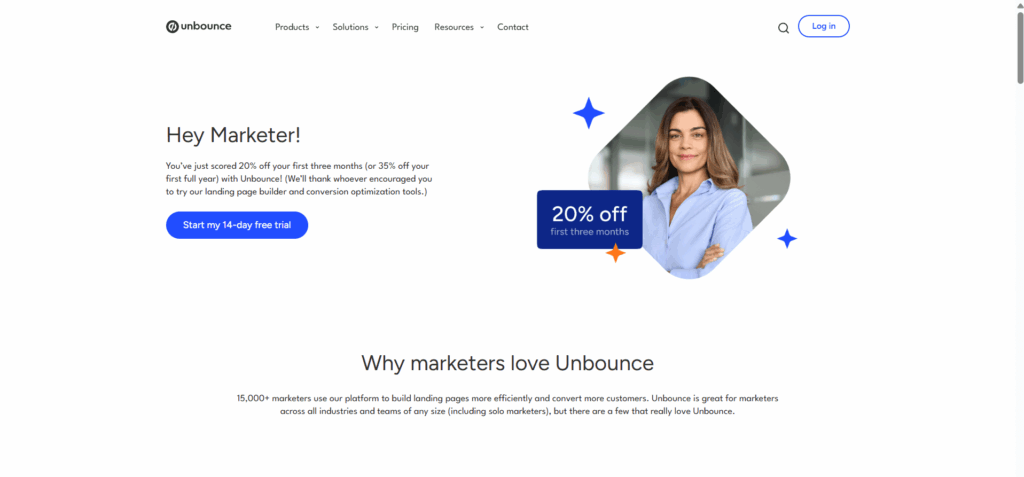
Unbounce landing pages prioritize speed with the use of lightweight templates and clean code.
8. A/B Testing
A/B testing is also known as split testing. This is a testing method used to compare two versions of web pages, ads, buttons, and other elements. This is done to determine which one performs better.
Why it matters:
You can’t improve what you cannot measure. A/B testing uncovers what works best for your site and what your audience likes
How to implement:
- Test one variable at a time (headline, CTA color, layout).
- Utilize tools such as Google Optimize, Optimizely, or VWO.
- Run tests with larger traffic.
Example:

HubSpot offers different variations of the contrast feature on its page, which is a good example of A/B testing for landing pages.
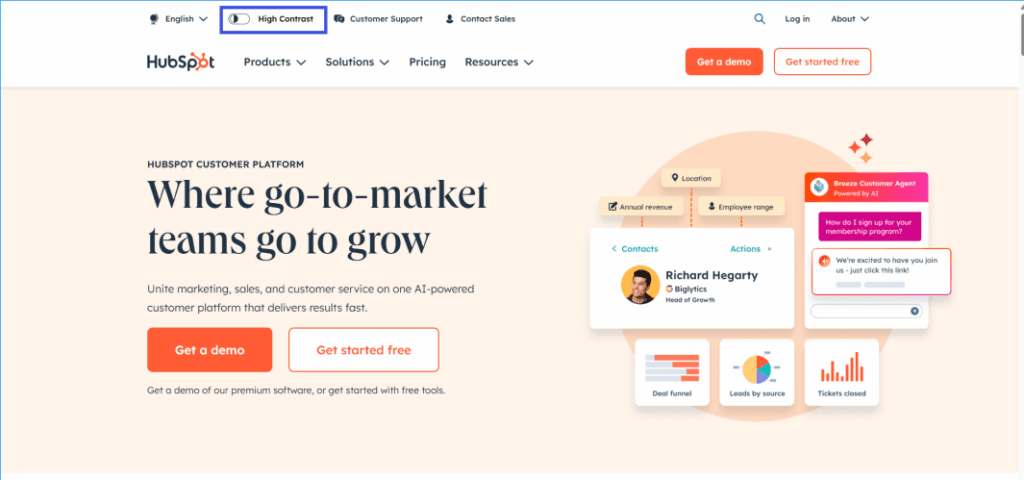
9. Use of Video and Visual Elements
Videos and visuals help to:
- Quickly grab the user’s attention
- Explain complex ideas more effectively
- Helps to boost trust with visitors
They increase user engagement and can enhance conversion rates by making your message more memorable and persuasive to visitors.
Why it matters:
Videos increase dwell time and make complex ideas easier to grasp.
How to implement:
- Keep videos under 2 minutes.
- Use autoplay without sound for mobile.
- Place above the fold when possible.
Example:
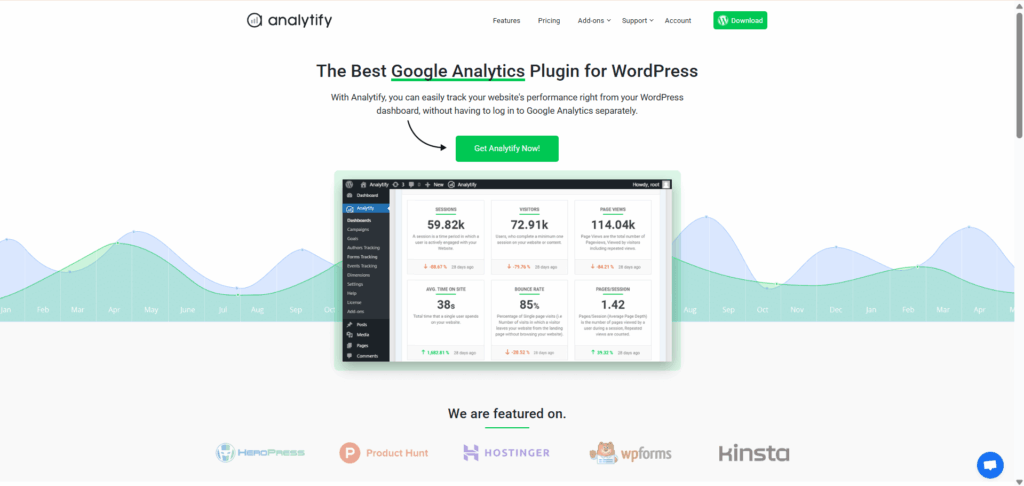
Analytify uses attractive visuals like videos to showcase their product walkthroughs that clarify how the product works.
10. Simplified Forms
Simplified forms reduce complications for users. They assist in making it quicker and easier to complete actions, which leads to higher conversion rates. Fewer fields mean less effort on the user’s behalf and lower bounce rates. Not only that, but a clean and concise form also builds trust and improves the user experience.
Why it matters
Adding more fields to the forms will result in fewer conversions. Ask only for what you need.
How to implement
- Use multi-step forms if necessary.
- Auto-fill where possible.
- Add progress bars to reduce friction.
Example
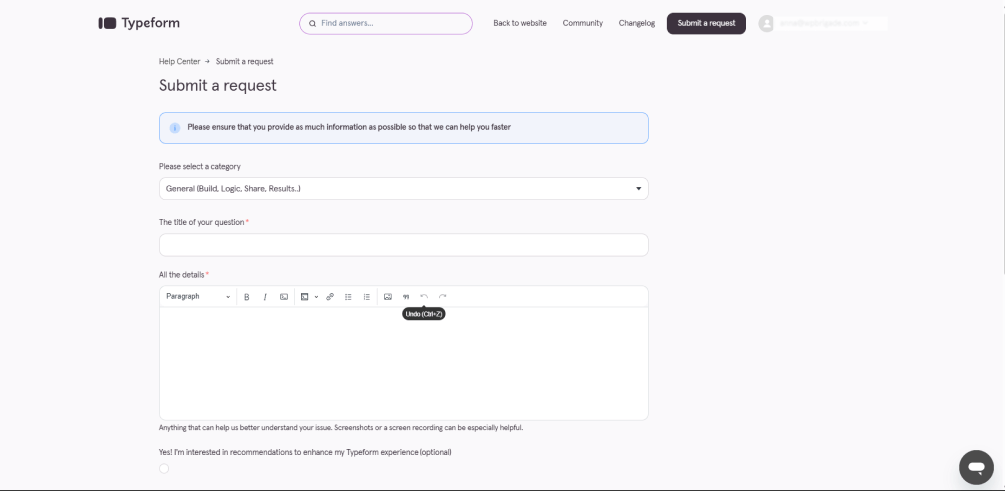
Typeform designs conversational forms that feel more like a chat than a form.
Landing Page Design Tips for 2025
Landing pages are the backbone of digital marketing campaigns. But for you to remain competitive in 2025, landing pages must be faster, have better UX, and be more personalized.
In this section, we’ll explore the top landing page design trends for 2025. We will also highlight common risks and show you how to optimize your pages using the WordPress analytics plugin called Analytify.
Here’s what’s working in 2025:
- Minimalist Design: Cleaner interfaces with many fewer distractions.
- Interactive Content: Sliders, quizzes, and calculators increase engagement.
- Personalization: Dynamic headlines or offers that are based on targeted user behavior.
- Micro-Animations: Subtle animations guiding users without distracting or confusing them.
- Responsive and Speed-First: Google’s Core Web Vitals rewards fast and responsive pages.
Common Mistakes to Avoid When Designing the Coolest Landing Pages
Many marketers unknowingly sabotage their conversions. Here’s what to avoid doing to ensure the implementation of landing page best practices.
| Mistake | Why It’s Harmful | Quick Fix |
| Overly Complex Forms | Leads to form abandonment | Use 3-5 fields maximum |
| Cluttered layouts | Confuses users | Stick to 1 goal per page |
| Unclear CTA | Reduces clicks | Action-oriented language |
| Slow loading times | Increases bounce rates | Optimize assets and code |
| No mobile optimization | Fails mobile users | Use responsive themes and test regularly |
| Too many distractions | Users lose focus | Remove unnecessary links or nav bars |
Track the Performance of Landing Pages with Analytify
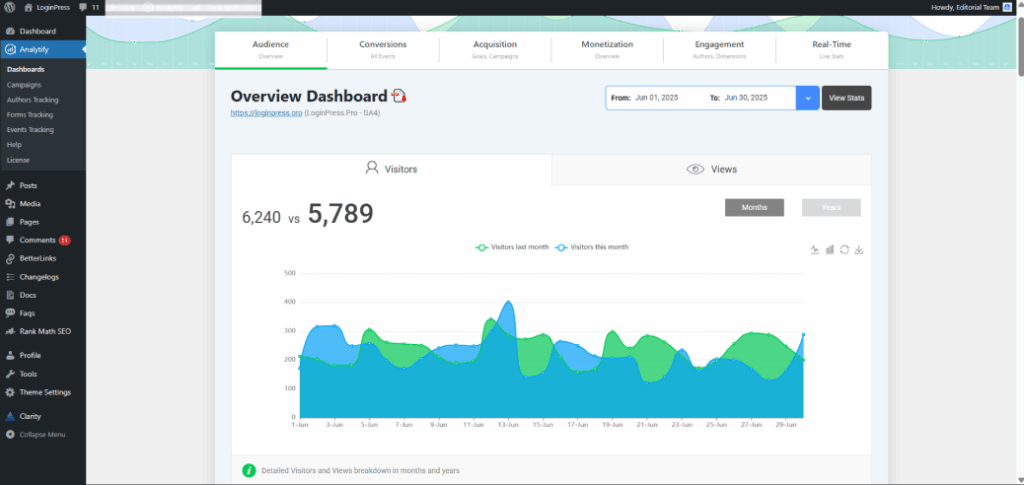
Creating a beautiful landing page is just half of the journey to best practices for landing pages. The most important part of it all is tracking its performance. That is what helps you optimize for better conversions.
That is where Analytify comes in.
Analytify is a powerful WordPress plugin that brings the full power of Google Analytics directly into your WordPress dashboard. It requires no code and no configuration complexity or setup.
It will automatically track your landing page performance and present the data in a clean and user-friendly interface.
Key Landing Page Metrics You Can Track with Analytify:
- Conversion rate per landing page
- Bounce rate and average session duration
- Visitor location and referral source
- Top-performing CTAs and engagement sections
With Analytify, you can see exactly what’s working on your landing pages and make data-driven design decisions to boost results.
Bonus Tip: Make use of UTM parameters and track them within Analytify to assess the effectiveness of different landing page campaigns.
Bonus Tip: Using LoginPress To Apply Landing Page Best Practices

When creating high-converting landing pages, it’s essential to ensure that all parts of your website, including the login page, align with your conversion goals. Your login page plays a necessary role in converting users, especially if your website relies on user accounts or memberships
LoginPress helps you create a fully branded, user-friendly WordPress login page that matches your landing page’s design and enhances user trust and experience.
Provided that, here are some of the best login/logout page features that LoginPress offers:
- Custom Login Pages: Match your landing page branding for a smooth user journey.
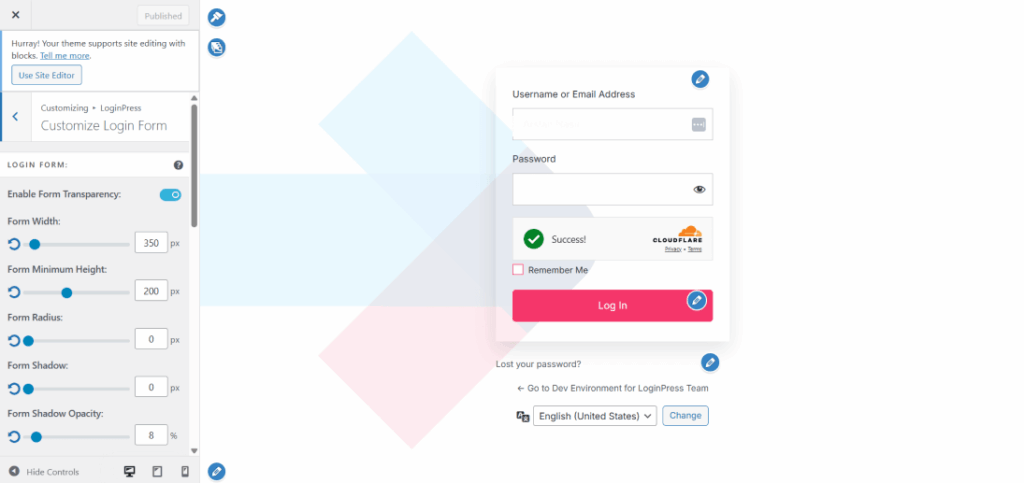
- Social Login Options: Make signing up and logging in easy with Google, Facebook, or Twitter logins.
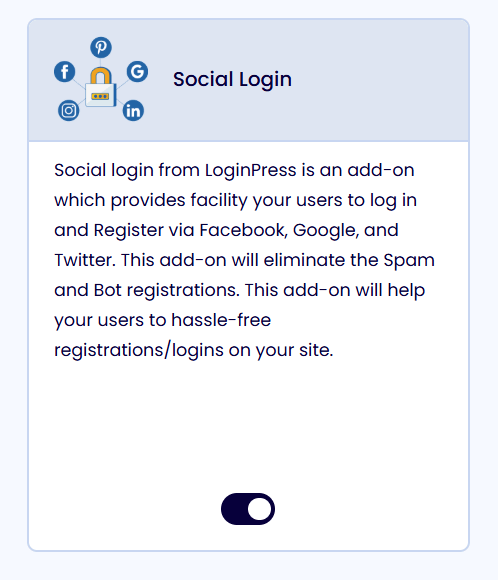
- Login Redirects: Send users directly to personalized thank-you pages or dashboards after they log in.
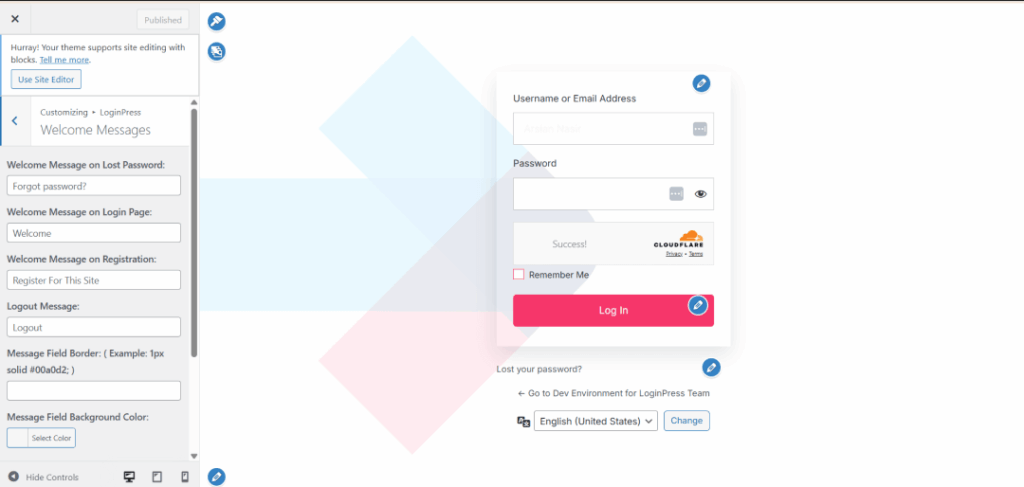
- Error Messaging & Validation: Reduce login-related drop-offs by guiding users with custom error messages.
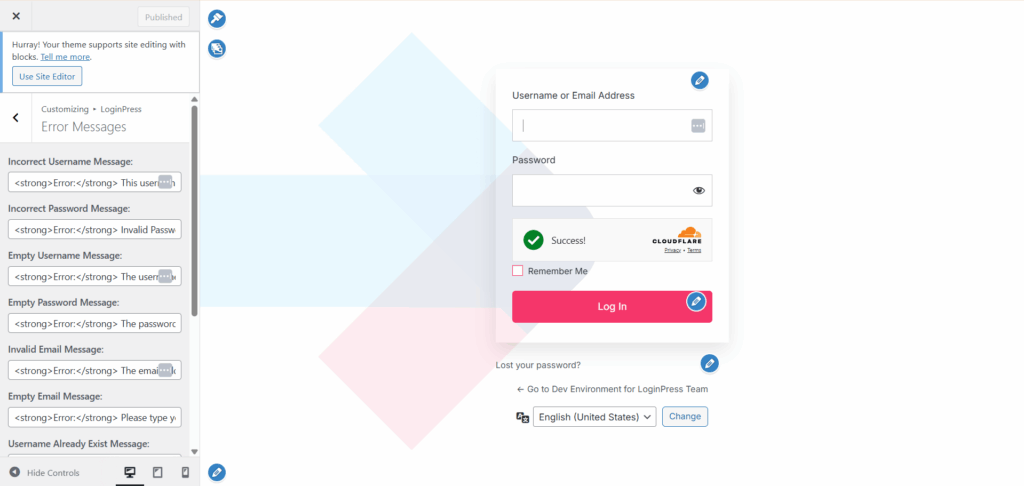
- Security + Design: Improve trust and UX without compromising security.
Security features
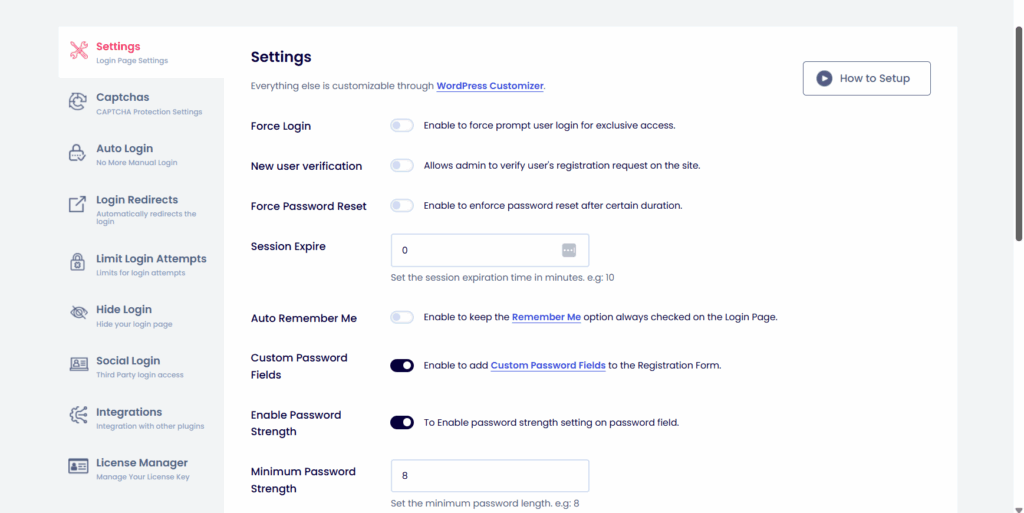
Design features

This can be your site, which collects leads, sells courses, or builds a membership site. LoginPress complements your landing pages by ensuring users have a smooth experience before and after conversion.
Pro Tip: Pair LoginPress with Analytify to track how login flow improvements impact bounce rate and user engagement.
Best Landing Page FAQs
How many CTAs should a landing page have?
Stick to one primary CTA, repeated in a few strategic spots across the page. Too many calls-to-action can confuse visitors and lower conversion rates.
What makes a landing page convert better?
Landing page optimization best practices focus on clarity, speed, mobile-friendliness, and alignment with user intent. Using goal-focused headlines, strong visuals, and social proof can dramatically improve conversions.
How do I know if my landing page is working?
Use WordPress plugins like Analytify and A/B testing platforms to track metrics like bounce rate, time on page, scroll depth, and conversions. These help you see what’s working and what needs fixing.
How long should a landing page be?
It depends totally on your site goals!
Short landing pages work best for simple offers or lead magnets.
Long-form landing pages are better for high-ticket items, complex services, or skeptical audiences who need more info to convert.
Wrap-Up: Boost Landing Page Conversions with These Landing Page Best Practices
Landing pages are one of the most powerful tools in digital marketing when used correctly. By following these landing page design tips, you’ll be able to create pages that not only look great but also convert visitors into customers.
That’s it! You’ve now explored the top Landing Page Best Practices to boost your conversions in 2025.
If you want to turn more visitors into leads and customers, start applying these proven tips mentioned in the article and observe the difference.
Related articles:
- 13 Best Login Page Examples to Inspire Your Own Design
- 7 Best Practices to Limit WordPress Failed Login Attempts
If you found this article worthwhile, you can let us know which landing page best practices helped you optimize your business.
